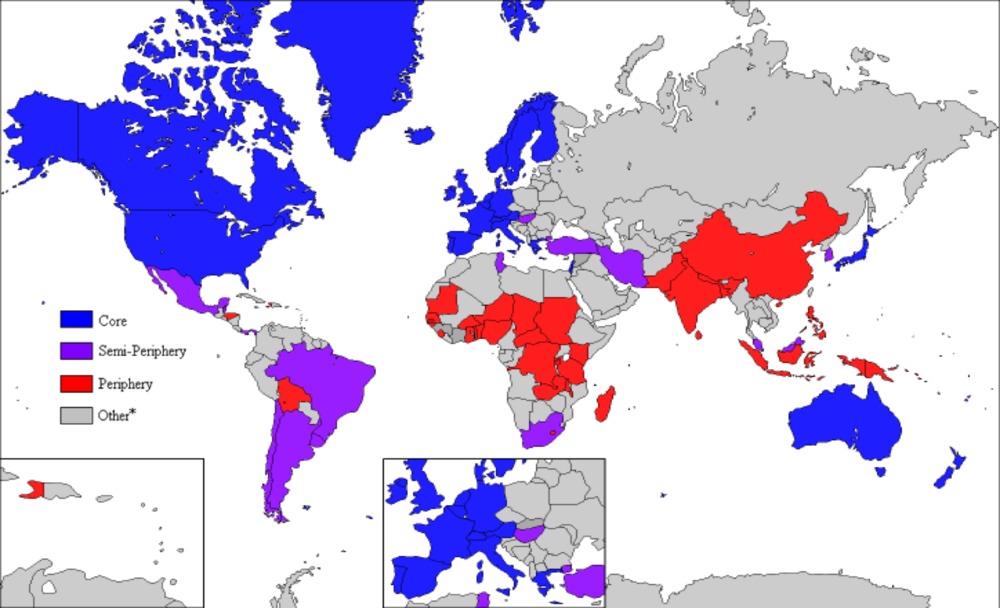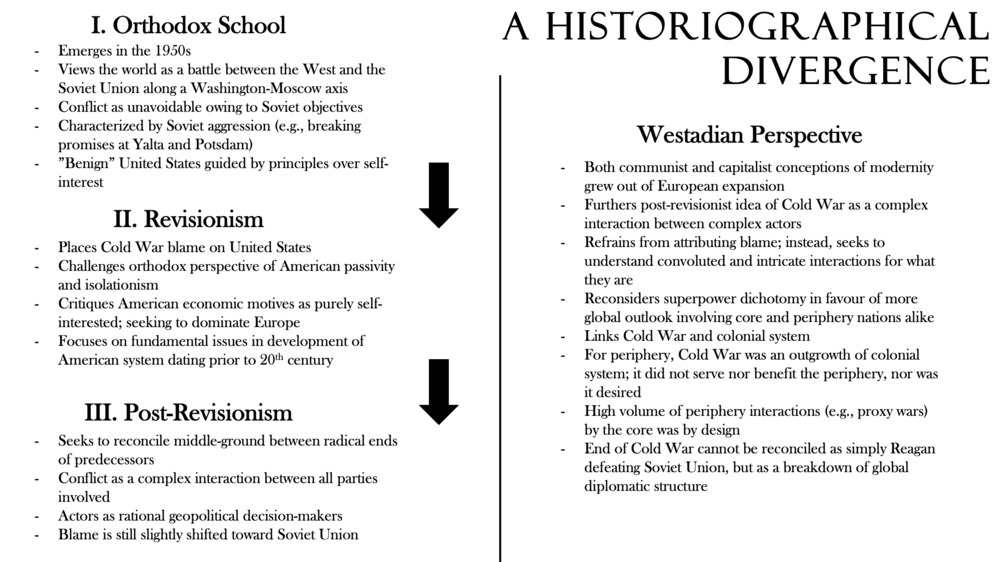Removing the "Cold War" Lens: Westad and Modern Cold War Scholarship
Now that we better understand how historians have interpreted the Cold War and its effects, we can take the next step toward removing the “Cold War lens.” Let us therefore turn to Africa and the period of decolonization that followed the end of the Second World War, when divergent African political actors were seeking independence from their European subjugators.
In the traditional lens, understanding the motivations of these actors was not entirely necessary. In essence, it was simply a question of whether one’s alignment was to Western democracy or Soviet communist internationalism. As we will come to learn, however, this is not because African actors during the Cold War were modest, simple, and uncomplex; rather, it is because the scholarship has not given African actors their just due.
Removing the "Cold War Lens"
The historiography of African decolonization during the Cold War has been traditionally presented in the orthodox lens of Cold War analysis. Fledgling post-colonial states whose inexperienced, disposable, and developing federal governments serve as perfect prey for the much larger and more influential global powers. A relationship of the hunter and the hunted. In this light, the actions of the smaller state, upon whom influence is always exerted, are always understood within a Moscow-Washington axis; if a decision is not of American democratic consciousness, then it must therefore be of Soviet communist consciousness instead. As the two superpowers, naturally smaller nations must be aligned one way or the other.
But what if this is not the case, and that many post-colonial African states and their respective political actors therein were not acting under the influence of either the United States or the Soviet Union, but of their own accord?
As the Westadian school of Cold War analysis demonstrates, this assumption is not only plausible, but highly accurate in more instances than not.
This concept - that third-world political actors possessed more agency than simply as pawns to American or Soviet intentions - is the foundation on which Matthew Connolly builds his theory of the "Cold War lens" ("
Ultimately, the “Cold War lens” has obscured racial, religious, and cultural realities that extended far beyond the Washington-Moscow axis, and which requires the recognition of the imaginary yet not entirely arbitrary connections concerning the relationship of power and knowledge to the “imperial center” as stemming from disenchantment with “modernization” and the specter of civilizational conflict [2]. Therefore, we effectively leave behind the simplicities of East-West categorization for a more complex North-South paradigm under the Wallerstein world-systems theory [3]. In doing so, the Washington-Moscow axis is repurposed as an extension of the core over the periphery, and thus periphery nations can, in turn, be two-fold understood in relation to the core, but also in their own respects as well.
A Global Cold War: The "Westadian" Approach
The year 2005 was a before-and-after moment concerning Cold War historiography. For fifty years had the conflict been interpreted through a steadfast binary model, until Odd Arne Westad’s The Global Cold War (Cambridge: Cambridge University Press, 2005) [4] fundamentally changed everything by introducing a triangular relationship based upon Wallerstein’s world-systems theory where empires of justice and freedom interacted in various ways with third-world revolutionaries implicated in in campaigns toward decolonization that bolstered significantly following the Second World War. In short, both capitalist and communist modernity grew out of European colonial expansion; the Cold War was ultimately against the interests of the periphery. In a way, the Cold War was colonialism. But then, ascribing universal umbrella terms is precisely what Westad attempts to avoid. In Algeria and Vietnam, for instance, Westad concludes the Cold War manifested distinct from colonialism [5].
The leading imperative nevertheless remains at the forefront of the Westadian model: To safeguard its own interests, the United States concluded it had to advance world market capitalism and liberal democracy. This naturally ambitious global endeavour, in turn, nudged periphery revolutionaries in the direction of the Soviet Union, which, as a result of its own imperial ambitions and ideologically charged desires to reshape the periphery, gladly countered with aid, military supplies, and diplomatic support. As such, the periphery became not by fortuity and accident the location of great power disputes, but by design. For both the United States and the Soviet Union, the periphery was the paramount stake [6].
In other words, to understand the unique interactions respective to different locations in the periphery, a top-down, Gaddesian-style East-West dichotomy will not suffice. How, for instance, are we supposed to make sense of the Angolan Civil War looking only at the relationship between Washington and Moscow? Did Angola not contain a multitude of actors far removed from the concerns of imperial powers on the other side of the globe, focused instead on their centuries-long history concerning Portuguese colonization? If the core was all that mattered, why did the two superpowers exert such time and energy in the periphery?
Moving forward, we will explore how Cuban internaitonalism in Africa has been treated by Westadian historians. What appears on the surface as a small semi-periphery nation acting under Soviet imperative instead contains diverse motivations that lay outside the Washington-Moscow axis for Cold War interventionism.
-------------------------------------------------------------
[1] See Connolly,"
[2] Ibid.
[3] For elaboration on the world-systems theory, see Immanuel Wallerstein, The Modern World System I: Capitalist Agriculture and the Origins of the European World-Economy in the Sixteenth Century (New York: Academic Press, 1974); and “The Rise and Future Demise of the World Capitalist System: Concepts for Comparative Analysis," Comparative Studies in Society and History 16, no. 4 (1974): 387-415.
[4] See Odd Arne Westad, The Cambridge History of the Cold War (Cambridge: Cambridge University Press, 2010); see also The Global Cold War: Third World Interventions and the Making of Our Times (Cambridge: Cambridge University Press, 2006).
[5] Ibid. Westad dedicates a chapter to addressing why the Vietnam War has a particular past that removes it from the colonial dichotomy. This, in turn, serves the larger idea that some periphery states, like Angola, faced colonialism post-WW2 while others, like Vietnam or Algeria, did not.
[6] Ibid. The concept that the United States and the Soviet Union specifically chose periphery nations in which to fight proxy wars instead of each other directly is a massive misunderstanding of why the superpowers were in the periphery in the first place. As Westad explains, the United States drove many periphery actors toward a Soviet Union with welcome open arms in an attempt to establish global hegemony.



